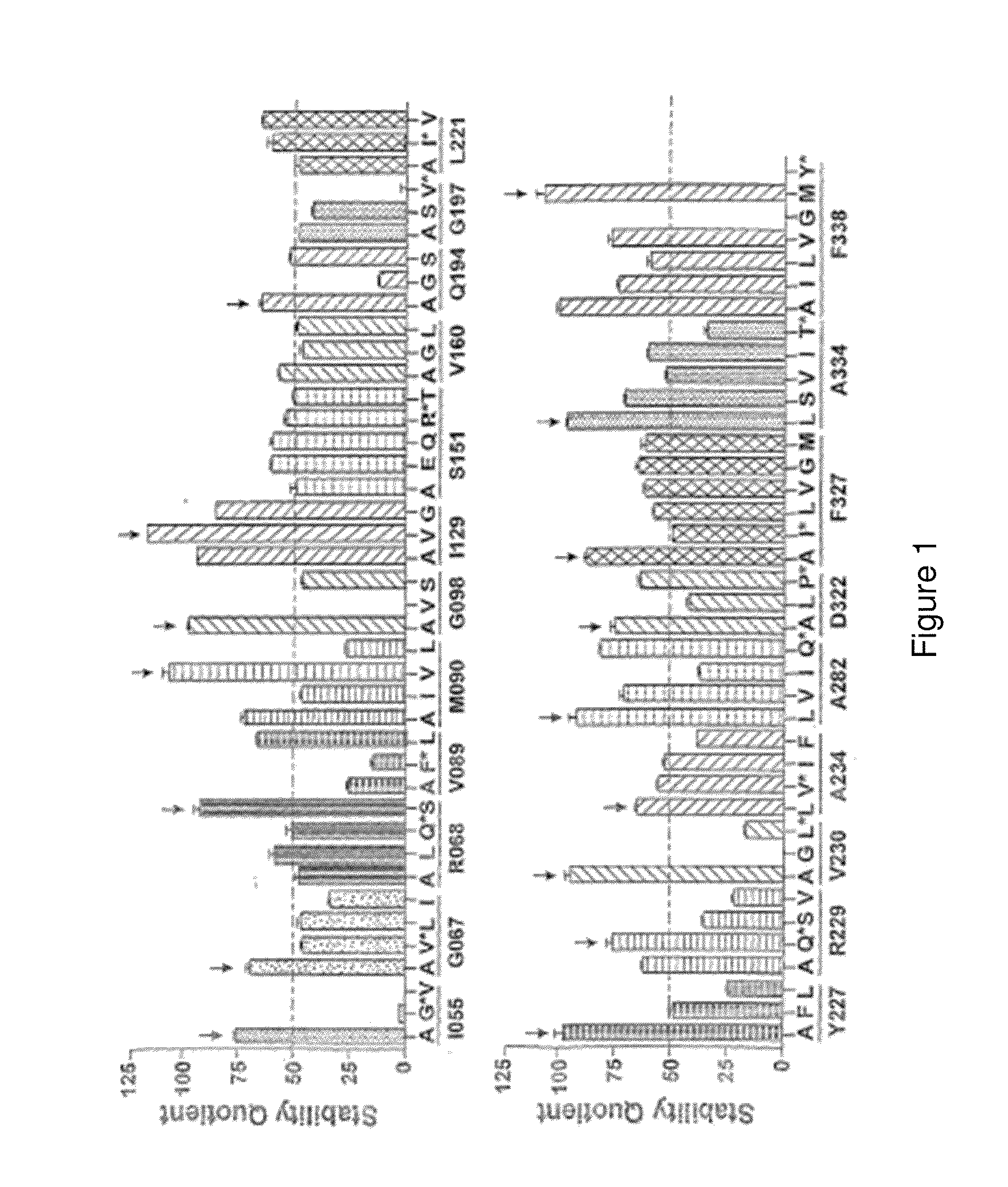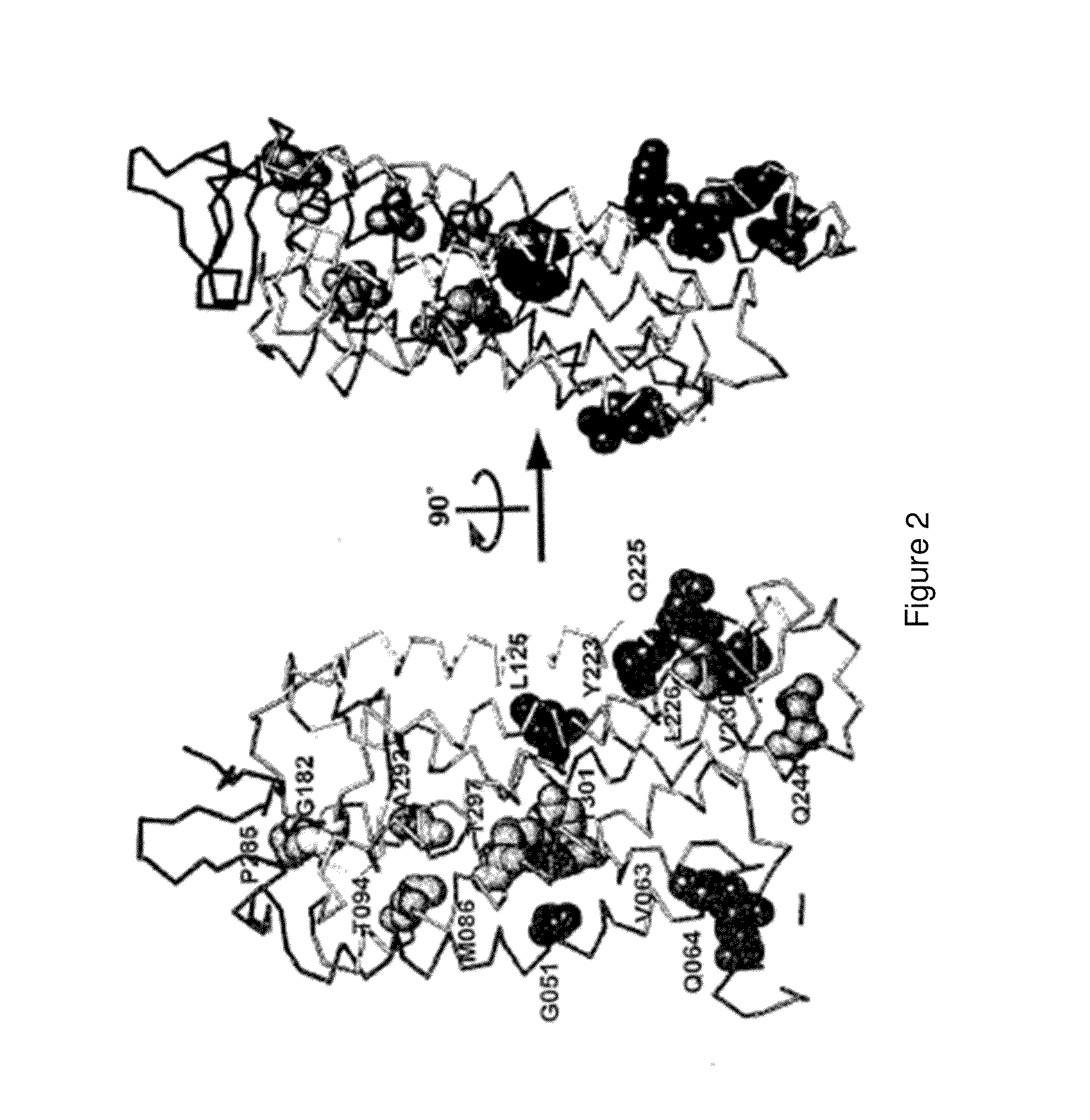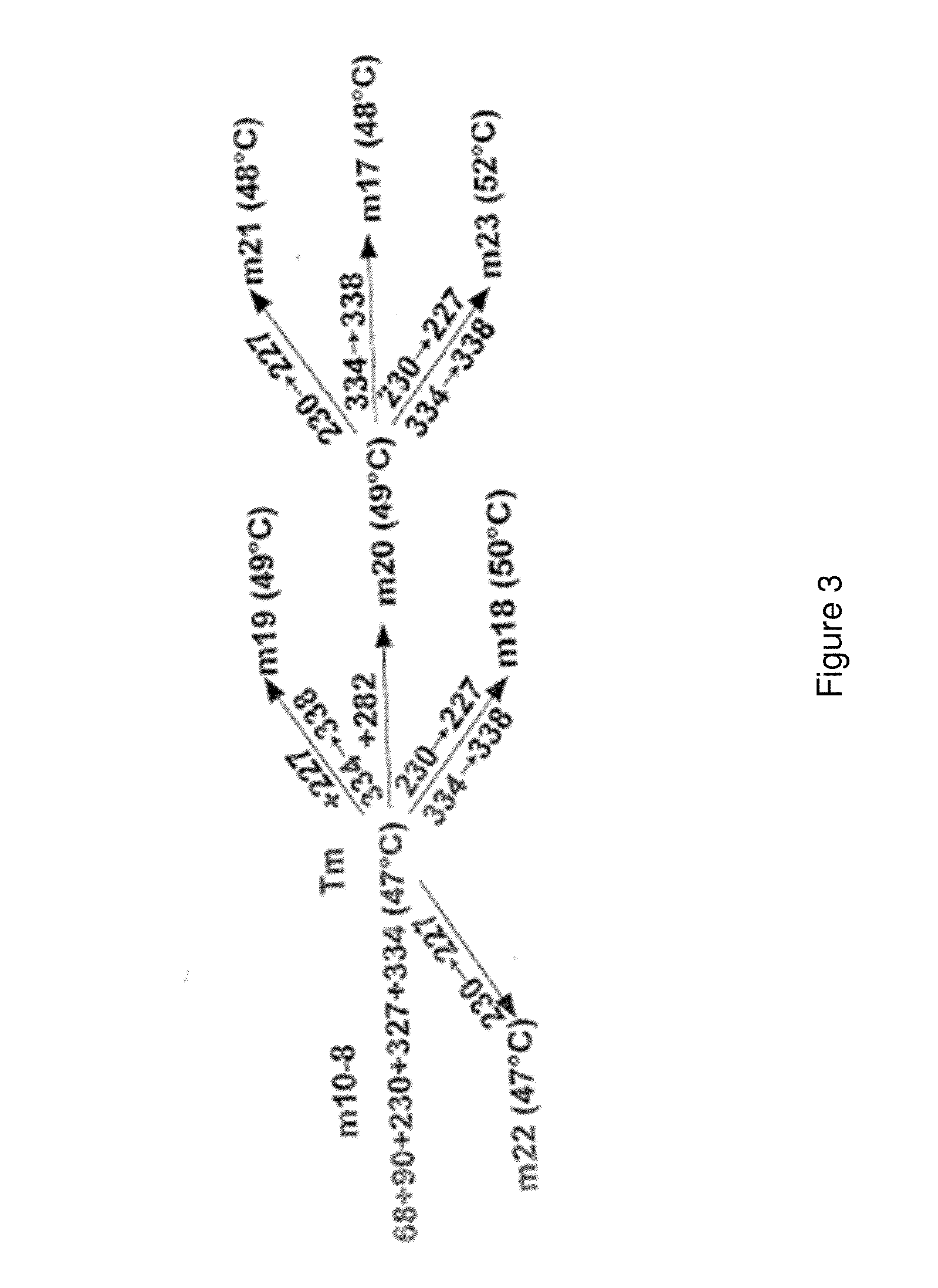Methods for screening for binding partners of g-protein coupled receptors
a technology of gpcrs and binding partners, which is applied in the field of screening of binding partners of gpcrs, can solve the problems of difficult generation of therapeutic antibodies for gpcrs, and achieve the effect of increasing stability
- Summary
- Abstract
- Description
- Claims
- Application Information
AI Technical Summary
Benefits of technology
Problems solved by technology
Method used
Image
Examples
example 1
Conformational Stabilisation of the β-Adrenergic Receptor in Detergent-Resistant Form
Summary
[0448]There are over 500 non-odorant G protein-coupled receptors (GPCRs) encoded by the human genome, many of which are predicted to be potential therapeutic targets, but there is only one structure available, that of bovine rhodopsin, to represent the whole of the family. There are many reasons for the lack of progress in GPCR structure determination, but we hypothesise that improving the detergent-stability of these receptors and simultaneously locking them into one preferred conformation will greatly improve the chances of crystallisation. A generic strategy for the isolation of detergent-solubilised thermostable mutants of a GPCR, the β-adrenergic receptor, was developed based upon alanine scanning mutagenesis followed by an assay for receptor stability. Out of 318 mutants tested, 15 showed a measurable increase in stability. After optimisation of the amino acid residue at the site of eac...
example 2
Mutants of the Adenosine A2a Receptor A2aR with Increased Thermostability
[0482]1. 315 site-directed mutants made between residues 2-316 of A2aR.[0483]2. All of these mutants have been assayed for thermostability using an assay measuring agonist and antagonist binding after the heating step (Ligand(−) format as described in FIG. 12).[0484]a. 26 mutants showed improved thermostability when measured with 3H-NECA (agonist): G114 A, G118A, L167A, A184L, R199A, A203L, L208A, Q210A, S213A, E219A, R220A, S223A, T224A, Q226A, K227A, H230A, L241A, P260A, S263A, L267A, L272A, T279A, N284A, Q311A, P313A, K315A.[0485]b. 18 mutants showed improved thermostability when assayed with 3H-ZM241385 (antagonist): A54L, V57A, H75A, T88A, G114A, G118A, T119A, K122A, G123A, P149A, E151A, G152A, A203L, A204L, A231L, L235A, V239A.[0486]3. Mutations have been combined to generate mutants in a putative antagonist conformation. Wildtype A2aR has a Tm of 31° C. with ZM241385 bound.
a. Rant17 A54L + K122A + L235AT...
example 3
Mutants of the Neurotensin Receptor (NTR) with Increased Thermostability
[0488]1. 340 site-directed mutants have been made between residues 61-400 of NTR.[0489]2. Initially, all of these mutants were assayed for thermostability using an assay measuring 3H-neurotensin (agonist) binding after the heating step. 24 mutations led to a small but significant increase in thermostability: A356L, H103A, D345A, A86L, A385L, Y349A, C386A, K397A, H393A, I116A, F358A, S108A, M181A, R392A, D113A, G209A, L205A, L72A, A120L, P399A, Y351A, V268A, T207A, A155L, S362A, F189A, N262A, L109A, W391A, T179A, S182A, M293A, L256A, F147A, D139A, S100A, K176A, L111A, A90L, N270A.[0490]3. Mutants tested for thermostability by heating in the absence of the agonist were re-tested using a slightly different assay where the mutants were heated in the presence of 3H-neurotensin (Ligand(+) format in FIG. 12). Mutants with improved thermostability are: A69L, A73L, A86L, A90L, H103A, V165A, E166A, G215A, V229A, M250A, 12...
PUM
| Property | Measurement | Unit |
|---|---|---|
| Tm | aaaaa | aaaaa |
| stability | aaaaa | aaaaa |
| β | aaaaa | aaaaa |
Abstract
Description
Claims
Application Information
 Login to View More
Login to View More - R&D
- Intellectual Property
- Life Sciences
- Materials
- Tech Scout
- Unparalleled Data Quality
- Higher Quality Content
- 60% Fewer Hallucinations
Browse by: Latest US Patents, China's latest patents, Technical Efficacy Thesaurus, Application Domain, Technology Topic, Popular Technical Reports.
© 2025 PatSnap. All rights reserved.Legal|Privacy policy|Modern Slavery Act Transparency Statement|Sitemap|About US| Contact US: help@patsnap.com



